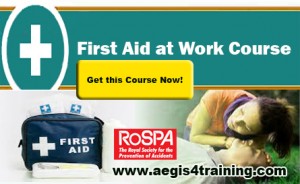First Aid in your House is Very Important

First Aid is very important for every home because you cannot afford that one of your family member will aggravate the circumstances because you failed to apply the so called First Aid to your family member.
First aid is very important for every home. First aid are necessary so that you can treat ailments and injuries that happen at home. From the minor ailment to the more serious injury a first aid can help reduce the risk of infection or the severity of the injury. It might benefit you and your family to attend a first aid class through the Red Cross in order to know how to know more about First Aid at home. Learning first aid can help you feel more prepared and able to cope in an emergency situation.
Of course knowing how to apply First Aid you must have materials to be used when in need and this is the First Aid Kit. Another good place to have a first aid kit is when you go out with your family. You can store it in your vehicle so if something happens when you are out somewhere you can start treating the problem immediately.
It’s important to have a well-stocked first aid kit in your home so you can deal with minor accidents and injuries.
Your first aid kit should be locked and kept in a cool, dry place out of the reach of children.
Many people also keep a small first aid kit in their car for emergencies.
Your basic first aid kit
A basic first aid kit may contain:
- plasters in a variety of different sizes and shapes
- small, medium and large sterile gauze dressings
- at least two sterile eye dressings
- triangular bandages
- crêpe rolled bandages
- safety pins
- disposable sterile gloves
- tweezers
- scissors
- alcohol-free cleansing wipes
- sticky tape
- thermometer (preferably digital)
- skin rash cream, such as hydrocortisone or calendula
- cream or spray to relieve insect bites and stings
- antiseptic cream
- painkillers such as paracetamol (or infant paracetamol for children), aspirin (not to be given to children under 16), or ibuprofen
- cough medicine
- antihistamine tablets
- distilled water for cleaning wounds
- eye wash and eye bath
It may also be useful to keep a basic first aid manual or instruction booklet with your first aid kit.
Medicines should be checked regularly to make sure they are within their use-by dates.
Home First aid tips
Not much time? Check out these fast first aid tips to learn some basic first aid skills.
First aid for someone who’s unresponsive and not breathing
- The delivery of chest compressions
- Check breathing by tilting their head backwards and looking and feeling for breaths.
- Call 999 as soon as possible, or get someone else to do it.
- Push firmly downwards in the middle of the chest and then release.
- Push at a regular rate until help arrives.
First aid for choking
- The delivery of back blows
- Hit them firmly on their back between the shoulder blades to dislodge the object.
- If necessary, call 999 or get someone else to do it.
First aid for someone who’s unresponsive and breathing
- Place the person on their side and tilt their head back
- Check breathing by tilting their head backwards and looking and feeling for breaths.
- Move them onto their side and tilt their head back.
- As soon as possible, call 999 or get someone else to do it.
First aid for someone who’s bleeding heavily
- Put pressure on the wound
- Put pressure on the wound with whatever is available to stop or slow down the flow of blood.
- As soon as possible, call 999 or get someone else to do it.
- Keep pressure on the wound until help arrives.
First aid for burns
- Cool the affected area
- Cool the burn under cold running water for at least ten minutes.
- Loosely cover the burn with cling film or a clean plastic bag.
- If necessary, call 999 or get someone else to do it.
First aid for a broken bone
- Immobilise the affected part
- Encourage the person to support the injury with their hand, or use a cushion or items
of clothing to prevent unnecessary movement.
- As soon as possible, call 999 or get someone else to do it. .
- Continue supporting the injury until help arrives.
First aid for a heart attack
- Ensure they are sitting and call 999 immediately
- The person may have persistent, vice-like chest pain, which may spread to their arms,
neck, jaw, back or stomach.
- Call 999 immediately or get someone else to do it.
- Make sure they are in a position that is comfortable for them (e.g. sit them on the floor,
leaning against a wall or chair).
- Give them constant reassurance while waiting for the ambulance.
BUY OUR FIRST AID TRAINING COURSE NOW!

